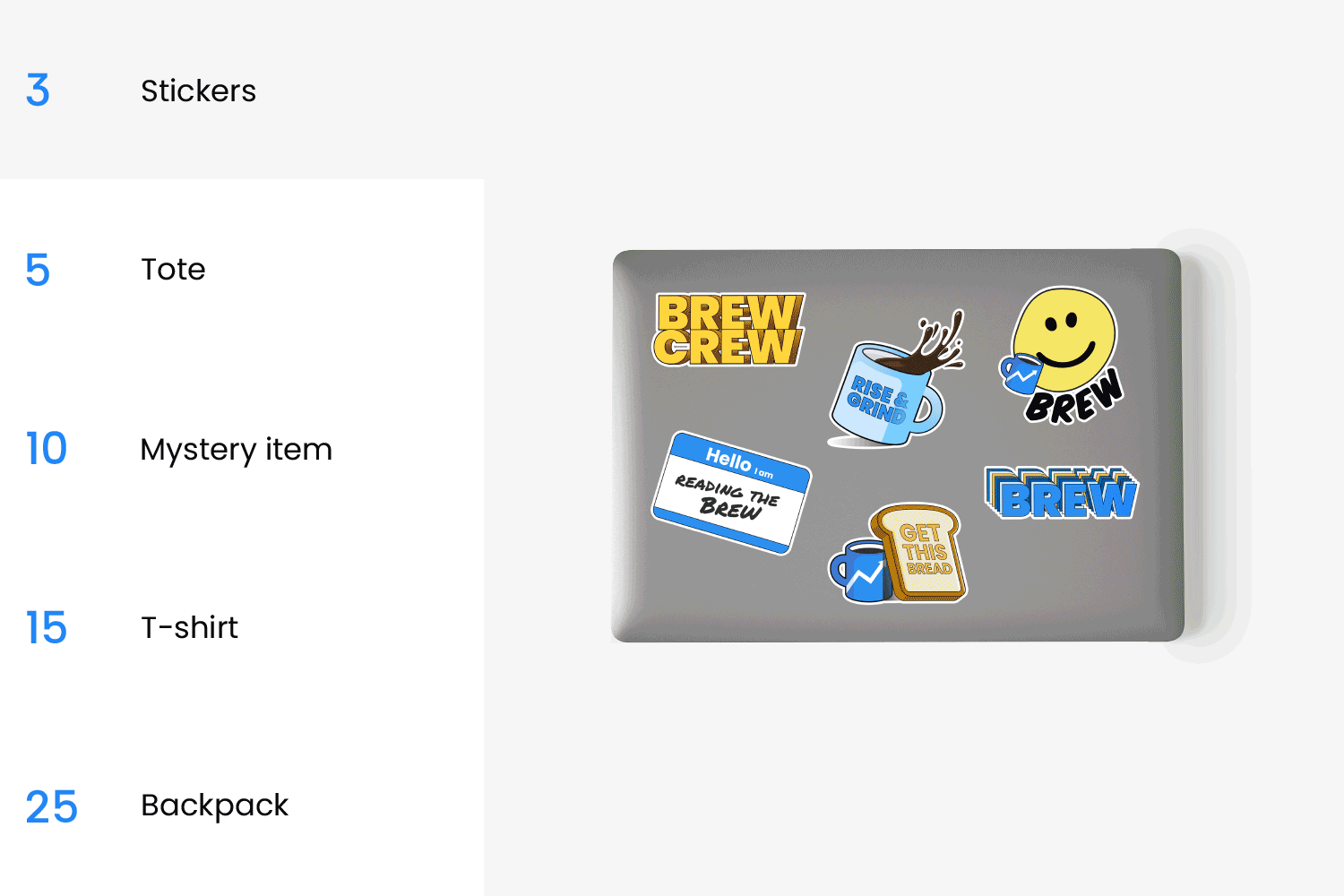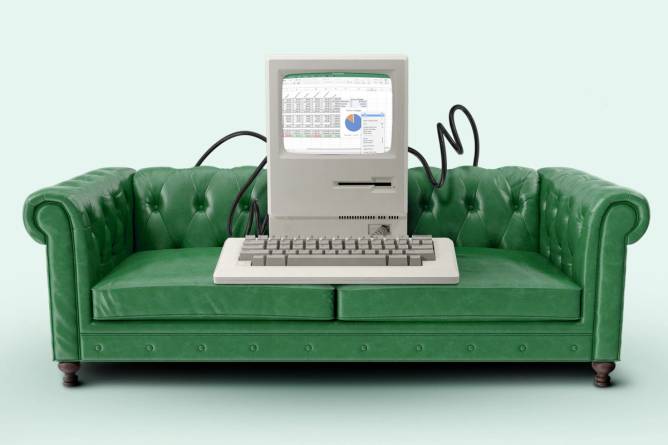|
Happy Friday! Give yourself a pat on the back, HR peeps: You’re leading the most generationally diverse workforce of all time. It’s no small feat, and we see you. 
In today’s edition:
 Childcare costs Childcare costs
 It’s It’s not easy being green
 Perks on perks Perks on perks
—Courtney Vinopal, Amanda Schiavo, Kristen Parisi
|
|
Alex Castro
|
The cost of raising a child in the US is rising, and the lack of a strong social safety net makes the prospect of having a family harder than in other industrialized nations.
While new parents in some states are able to take paid leave after having a child, no such program exists at the federal level. High childcare costs make staying in the workforce untenable for some parents, and public funding intended to alleviate this burden remains unreliable.
In light of these challenges, some lawmakers believe the private sector needs to play a stronger role in supporting working parents. Virginia Gov. Glenn Youngkin vetoed a paid family and medical leave insurance program on these grounds in April. Echoing this argument, Tennessee State Senator Bo Watson said “government is not the solution” to the country’s childcare challenges during a speech at the Best Place for Working Parents (BP4WP) national summit in Nashville on May 9. The business community should be a key leader in implementing family-friendly policies, he posited.
Employers are responding to this call in different ways, from investing in onsite childcare to instituting smaller-scale benefits, such as flexible work policies and backup care. Still, some policymakers remain hopeful that the public sector will do more to support working families—especially at a time when restrictive reproductive policies may hamper Americans’ decision-making when it comes to having kids.
Keep reading here.—CV
|
|
|
Ever wondered about the concrete results of a wellness benefit? You’re not alone. Fortunately, a new study can shed some much-needed light on this question.
Wellhub, formerly Gympass, recently released their Return on Wellbeing Study, a survey of over 2,000 HR experts. Here’s a glimpse of what they found:
-
91% of HR leaders reported decreased healthcare costs as a result of their wellness program—up from 78% in 2023.
- 95% of companies measuring the ROI of corporate wellness programs see positive returns—up from 90% in 2023.
The report also lays out how to maximize employee participation and unlock the full ROI of a wellness program.
Tap into the insights and action steps that can help you launch or upgrade your corporate wellness program. Download the report.
|
|
Francis Scialabba
|
Some employers are responding to the threat of the climate crisis by doubling down on all things green—including green talent.
“You can take ‘green’ a lot of different ways, but the purest version of what’s green is that it is leading to environmental or sustainability initiatives,” Mindy Schestag, VP of growth markets and strategic initiatives at ManpowerGroup, told HR Brew. “There’s a spectrum, there’s the very pure view of a 100% green job that is focused on sustainability or the environment. And then you’ve got all these other jobs that have skills required or a role that they play related to sustainability.”
Some 70% of global employers are currently recruiting or planning to recruit green talent. While renewable energy, manufacturing, operations, and IT are among the industries where such talent is in the highest demand, according to data from ManpowerGroup, Schestag said employers across the board are recruiting for these roles.
The bigger picture. In addition to creating green jobs, HR can consider other ways to incorporate the organization’s commitment to the environment into recruiting practices. Doing so can factor into where a candidate chooses to work.
Keep reading here.—AS
|
|
Alexander Farnsworth/Getty Images
|
It’s Associates Week at Walmart, when the company welcomes top associates from across the country to its Bentonville, Arkansas, headquarters to be recognized and celebrated.
As it welcomes its high achievers, it has also unveiled new offerings that it hopes will incentivize employees to grow their careers with Walmart, according to a company blog post.
One of those offerings is a new associate-to-technician pipeline program that will train associates to become facilities maintenance, HVAC, and automation technicians. The program is a response to Walmart’s skilled trade workers shortage, and the jobs will pay between $19 and $45 an hour, Walmart noted, compared to the average $20 an hour associates currently earn, according to ZipRecruiter data.
The company is also expanding its free education program, Live Better U, which launched in 2018 and provides employees free GED classes, college degree programs, and certificates.
Keep reading here.—KP
|
|
|
Care for your candidates. For 70% of job seekers, the candidate experience lasts longer and requires more work than ever before. Offer a better candidate experience with this comprehensive guide from Paylocity. Download the guide to revolutionize your recruiting game and attract (and retain) the best of the best.
|
|
Francis Scialabba
Today’s top HR reads.
Stat: The largest share of workers over age 55 are between 65 and 69 years old. (MarketWatch)
Quote: “If we want to be intentional about attracting and bringing a workforce to our industry, and women are part of that industry, we need to make sure that something as simple as, ‘Where do I go to the bathroom?’ is available to women.”—Tricia Kagerer, EVP at Jordan Foster Construction, on how employers can make the construction industry more attractive to female workers (HBS Dealer)
Read: The white-collar labor market has cooled in a way that is, one expert says, “driving people crazy.” (Axios)
All about adoption: Get the full ROI of your corporate wellness program with Wellhub. They focus on helping you drive adoption so you experience better retention, increased productivity, and lower healthcare costs. Learn more.* *A message from our sponsor.
|
|
|
Share HR Brew with your coworkers, acquire free Brew swag, and then make new friends as a result of your fresh Brew swag.
We’re saying we’ll give you free stuff and more friends if you share a link. One link.

Your referral count: 2
Click to Share
Or copy & paste your referral link to others:
hr-brew.com/r/?kid=9ec4d467
|
|
ADVERTISE
//
CAREERS
//
SHOP
//
FAQ
Update your email preferences or unsubscribe
.
View our privacy policy
.
Copyright ©
2024
Morning Brew. All rights reserved.
22 W 19th St, 4th Floor, New York, NY 10011
|
|









